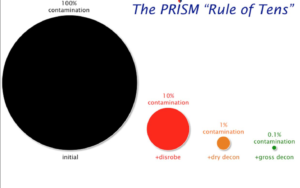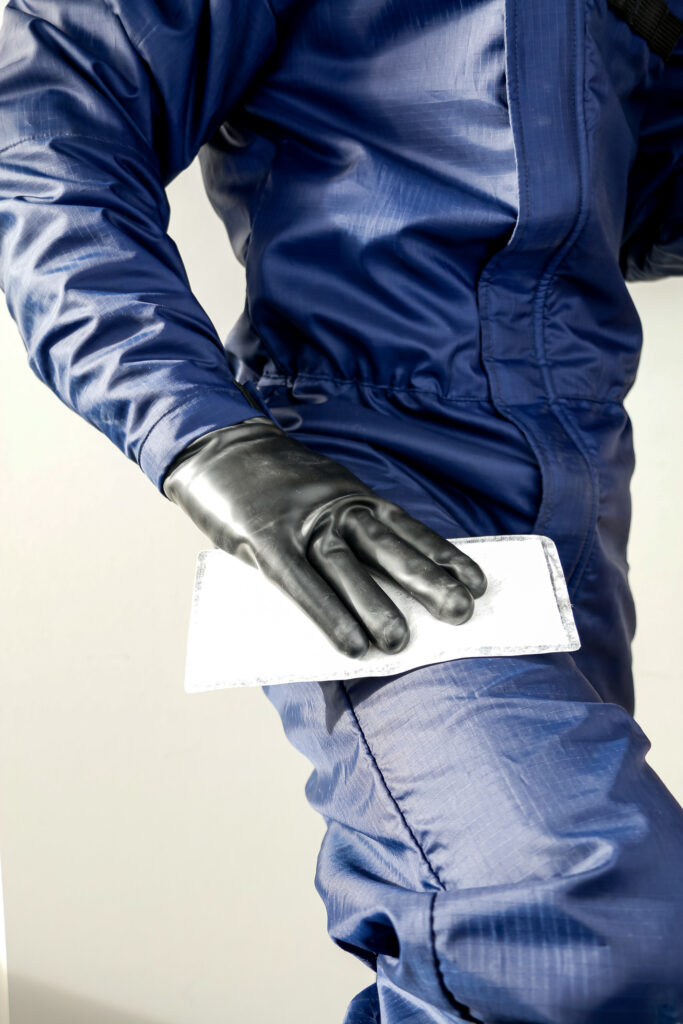An article in Nature on February 26, 2019 reports that the United States has just adopted a new response protocol in response to an attack or following a chemical industrial accident, which is important for at least two reasons:
- The new protocol, including dry decontamination, will significantly improve the care provided to victims;
- It is the result of serious studies published in international scientific journals.
A European project
A project, started in 2008 and completed in 2011, called ORCHIDS (Optimisation through Research of Chemical incident Decontamination System) “Evaluation and Optimisation of emergency mass casualty decontamination” is at the origin of these results.
It was coordinated by the Health Protection Agency (UK) and involved the following organizations: Swedish Defence Research Agency, Faculty of Military Health Sciences Czech Republic, Institut de Recherches Biomedicales des Armées – IRBA (France), the work was continued and the results were the subject of a large number of publications, the most recent of which are analyzed here.
Dry decontamination (1)
In the context of mass contamination, it was decided to evaluate the absorption of different materials within first aid’s reach and capable of “improvised” decontamination of toxic products spread during the attack. The decontamination of pig skin was measured ex-vivo on 5 chemicals and 19 absorbent products ranging from cotton blankets to incontinent diapers, toilet paper, sponges, kitchen wipes or “Sopalin” type paper. The results showed that, in the majority of cases, and in particular for diapers and “Sopalin” paper, dry decontamination was more effective in decontaminating the skin than wet decontamination R-W-R (Rinse-Wipe-Rinse) which consists of rinsing the skin with a detergent solution, then dabbing the skin surface with dry gauze and finally rinsing with running water. In addition, the operation is faster, 5 seconds for dry decontamination compared to 90 seconds for wet decontamination, but when the contaminant is particulate (biological contaminant or radioactivity) dry decontamination is not effective.
Testing on volunteers (2)
Tests on volunteers contaminated with methyl salycylate simulant and improvised sorbents such as tissues and incontinence pads have shown the following results:
- It is the method of use rather than the nature of the absorption medium that is important: dab and rub.
- Decontamination instructions must be clearly announced and understood. Otherwise, there is more of a spread of contamination. That is why first aid must show a lot of pedagogy and solid experience to ensure that the basic rules are respected while explaining to victims what is happening and why the actions they are asked to take are essential.
- Acceptability is not good. While everyone thinks it’s a good absorption method, few think it can be applied to CBRN! Many require additional treatment.
Decontamination protocol for health personnel in response to a CBRN attack or chemical accident in the United Kingdom (3)
The IOR (Initial Operational Response) process is based on scientific facts and focuses on the needs of the injured rather than the availability of specialized resources such as PPE, detection and monitoring devices or decontamination showers.The novelty is the introduction of an emergency undressing phase and a dry decontamination using absorbents:
- the process begins with the emergency undressing of the victim followed by a dry decontamination of the skin before the arrival of specialized resources,
- an optimization of the mass (wet) decontamination of the victims with a shower at 35°C for 90 seconds, possibly with a washcloth. This revised protocol could double the flow of victims and improve the removal of contaminants from the skin surface.
Dry decontamination does not generate large volumes of contaminated waste and does not cause the transfer and spread of contamination through clothing on the skin. Moreover, it does not cause a “wash-in” or “rinse-in” effect, resulting in a greater absorption of certain chemicals by the skin, and the faster the undressing and dry decontamination are carried out, the more effective the process is.
It has also been shown that this process is most effective against non-corrosive liquids and is not very effective against solid contaminants such as powders. It should also be noted that for corrosive liquids, cooling the skin under the effect of water is more appropriate but that, while waiting for the shower, dry decontamination significantly reduces the harmful effects of the corrosive product.
It is also well noted that undressing and dry decontamination must in all cases be accompanied by clear instructions from rescue team members to communicate the origins of the event, why and how one undresses with supporting demonstrations and mutual assistance; it is obvious that this protocol is only intended for able-bodied people who can understand and apply the instructions. Foreigners who do not speak the language are obviously in difficulty in such situations.
The United States (4, 5)
There are hundreds of chemical incidents in the United States each year, but most of them are minor; the guidelines are intended to help emergency services to prepare for a mass accident, such as a chemical weapon attack in a densely populated area, and the new protocol marks a change from the American pillar of decontamination preparedness, the “ladder pipe” system. In this method, two fire engines parked in parallel create a decontamination “corridor” in which people walk while trucks spray water laterally and above their heads. Victims can then benefit from more specialized cleaning involving rubbing.
But installing the shower system takes about 20 minutes and many chemicals can cause damage more quickly. In addition, the problem of wet decontamination is hypothermia, even in hot weather, and people’s reluctance to undress and walk in a cold water shower.
A large-scale exercise called “Operation Downpour” at the University of Rhode Island involving dozens of volunteers took place in August 2017. People were sprayed with a harmless solution – a mixture of curcumin (which gives turmeric its yellow color), solvents and baby oil, which mimics the properties of chemical weapons such as sarin and mustard gas.
The exercise tested combinations of 3 methods: dry decontamination with absorbent bandages, shower system and “technical decontamination”, in which specialized teams rubbed volunteers with water and detergents together, the three measures removed 100% of the chemicals from the victims’ skin. The only dry decontamination, strictly followed with clear explanations, allowed a 99% skin decontamination. Only 70% of the skin of people who did not fully comply with the directives, due to misunderstandings or disabilities that limited their movements, was decontaminated.
The researchers were also surprised to find that it is practically impossible to properly decontaminate the hair, which means that shaving is probably the most reliable option, apparently difficult to accept except perhaps in real situations of chemical attack including the notions of fear and suffering…
The different stages of decontamination can be summarized using the following diagram:

Paris fire brigade (6)
The Paris fire brigade has just adopted a very pragmatic didactic tool in the event of a CBRN event: the survival chain.
It consists of a 6-step sequence:
- Localized decontamination of the skin using a hyper-absorbent material (dry decontamination) after undressing, intended to limit the toxic effects of the product ;
- Identification of the toxidrome to prepare the care ;
- Administration of antidotes (atropine…) ;
- Thorough decontamination to avoid cross-contamination and protect the healthcare environment ;
- Transport to the hospital to complete the care.
As can be seen, this chain begins with undressing and dry decontamination.
Decpol ABS® Wipe
Ouvry has developed a dry decontamination system that can hyperabsorb toxic aqueous and oily products. It acts by dabbing and wiping and replaces the various devices seen in this article; in this case, dry decontamination is no longer “improvised” because the Decpol ABS® wipe can be available in the first aid equipment.
It has other advantages:
- it traps toxic products by avoiding environmental contamination;
- it neutralizes them thanks to the active agents contained inside the device;
- it generates neither exothermic nor explosive reactions, which makes it possible to handle unidentified products;
- it is also possible to think that acceptance by victims could be better, the effectiveness of a technical product being more easily imagined than a simple absorbent paper.
References
1- N. Kassouf, S. Syed, J. Larner, R. Amlôt, R.P. Chilcott . Evaluation of absorbent materials for use as ad hoc dry decontaminants during mass casualty incidents as part of the UK’s Initial Operational Response (IOR). Plos One February 2, 2017.
2- R. Amlôt, H. Carter, L. Riddle, J. Larner, R.P. Chilcott. Volunteer trials of a novel improvised dry decontamination protocol for use during mass casualty incidents as part of the UK’S Initial Operational Response (IOR). Plos One, June 16, 2017.
3- R.P. Chilcott, J. Larner, H. Matar. The United Kingdom’s initial operational response and specialist operational response to CBRN and HazMat incidents: a primer on decontamination protocols for healthcare professionals. Emerg Med J 2019, 36, 117-123.
4- P. Chilcott, J. Larner, A. Durrant et al. Evaluation of US Federal Guidelines (Primary Response Incident Scene Management [PRISM]) for Mass Decontamination of Casualties During the Initial Operational Response to a Chemical Incident.; 2018, An Emerg Med, Aug 23
5- D. Butler. US adopts science-bases guidance for chemical-attack response. Nature News, 26 february 2019.
6- F. Calamai, C. Derkenne , D. Jost, S. Travers, I. Klein, K. Bertho, F. Dorandeu, M.Bignand and B. Prunet. The chemical, biological, radiological and nuclear (CBRN) chain of survival: a new pragmatic and didactic tool used by Paris Fire Brigade., Crit Care, 2019, 23 :66
Autor: Prof. François Renaud



